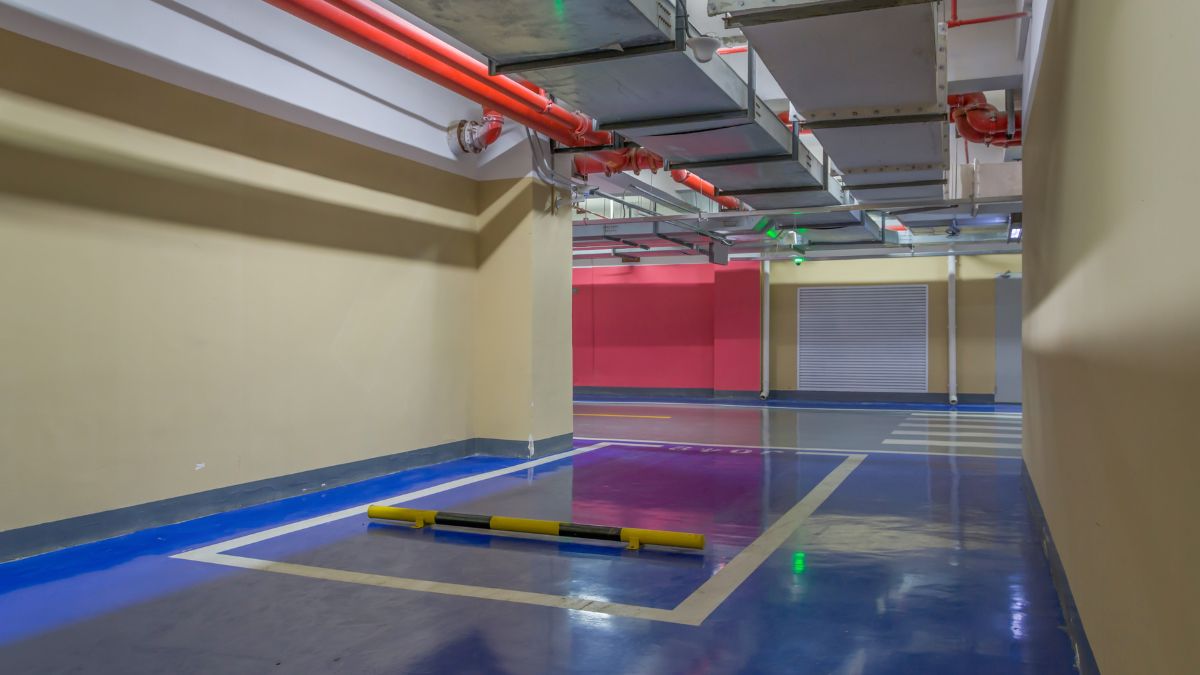Blog
HCOOCH CH2 H2O: How Its Create Unique Organic Compounds

Have you ever wondered how unique organic compounds are formed in nature? One intriguing player in this field is HCOOCH CH2 H2O. This chemical compound may seem complex at first glance, but its significance in organic chemistry is anything but ordinary. Understanding the structure and properties of HCOOCH CH2 H2O opens up a fascinating world where science meets creativity. From natural formations to synthetic applications, this compound plays a vital role in creating diverse substances that impact our daily lives. Let’s dive into the captivating realm of HCOOCH CH2 H2O and discover how it contributes to the rich tapestry of organic chemistry!
The Structure and Properties of HCOOCH CH2 H2O
HCOOCH CH2 H2O, known as methyl formate hydrate, presents a fascinating molecular structure. It consists of a methyl group linked to a formate ion with water molecules integrated into its framework. This combination results in unique interactions.
The molecule showcases both polar and nonpolar characteristics. The presence of the hydroxyl group contributes to hydrogen bonding potential, enhancing solubility in various solvents. Meanwhile, the carbon backbone remains hydrophobic.
This dual nature allows HCOOCH CH2 H2O to participate in diverse chemical reactions. Its functional groups make it an essential player in organic synthesis and biochemistry.
Methyl formate hydrate’s stability under mild conditions further amplifies its utility. Understanding its properties reveals opportunities for innovative applications within synthetic chemistry realms. Exploring these aspects can unlock new pathways for creating complex organic compounds.
How It is Formed in Nature
HCOOCH CH2 H2O, often referred to as formic acid methyl ester, is a fascinating compound that occurs naturally in various ecosystems. Its formation begins with the breakdown of organic matter. Microorganisms play a crucial role in this process.
During decomposition, these tiny agents convert sugars and other carbohydrates into simpler compounds. Among these products are esters like HCOOCH CH2 H2O.
Additionally, plant materials contribute significantly to its presence. When plants undergo metabolic processes or photosynthesis, they release volatile organic compounds. Some of these can combine chemically under specific conditions to create our target compound.
Environmental factors further influence its synthesis. Temperature, humidity, and microbial activity all play pivotal roles in determining how much HCOOCH CH2 H2O forms in any given environment. The balance between production and degradation shapes its natural abundance across different habitats.
Applications of HCOOCH CH2 H2O in Organic Chemistry
HCOOCH CH2 H2O plays a pivotal role in organic chemistry due to its versatile nature. This compound acts as an essential reagent, facilitating various chemical reactions that lead to the synthesis of complex molecules.
Its ability to form esters and amides makes it invaluable for creating diverse organic compounds. Chemists often utilize HCOOCH CH2 H2O in esterification processes, where alcohols and acids react under specific conditions.
Moreover, this compound aids in polymerization reactions. It contributes to developing polymers with unique properties suitable for different applications, from packaging materials to high-performance plastics.
In addition, HCOOCH CH2 H2O serves as a solvent in many reaction setups. Its polarity allows it to dissolve hydrophilic substances effectively while maintaining stability across various temperature ranges.
These attributes make it a go-to choice for researchers exploring innovative pathways in organic synthesis and material science.
Examples of Unique Organic Compounds Created by HCOOCH CH2 H2O
HCOOCH CH2 H2O plays a pivotal role in the creation of several unique organic compounds, showcasing its versatility. One notable example is methyl formate, which serves as an important solvent and reagent in various chemical reactions.
Another fascinating compound derived from this structure is diethyl malonate. With applications ranging from pharmaceuticals to agrochemicals, it highlights how HCOOCH CH2 H2O can contribute significantly to diverse fields.
Additionally, ethyl acetate finds its roots here as well. It’s widely used in paints and coatings due to its excellent solvency properties.
Each of these compounds demonstrates the creative potential locked within HCOOCH CH2 H2O, making it invaluable for chemists seeking innovative materials and solutions. The range of applications continues to expand as researchers explore new pathways for synthesis using this unique building block.
Potential Benefits and Limitations of Using HCOOCH CH2 H2O in Organic Synthesis
HCOOCH CH2 H2O presents intriguing advantages in organic synthesis. Its ability to serve as a versatile reagent allows chemists to create complex molecules efficiently. This compound often enhances reaction rates, leading to higher yields and purities.
However, there are challenges associated with its use. The stability of HCOOCH CH2 H2O can vary under different conditions, which may complicate reactions. Additionally, the specific byproducts formed can sometimes hinder desired outcomes.
Sustainability is another consideration. While it offers eco-friendly potential compared to traditional reagents, sourcing and processing must be managed carefully to ensure minimal environmental impact.
Understanding these benefits and limitations helps researchers navigate the complexities of using this unique compound effectively in their work. Balancing its strengths against possible drawbacks will lead to more successful applications in organic chemistry.
Concluion
The study of HCOOCH CH2 H2O opens up intriguing possibilities in the field of organic chemistry. Its unique structure and properties allow for various applications, showcasing its significance in creating unique organic compounds. Understanding how it forms naturally gives insight into its potential role in ecological systems and industrial processes.
HCOOCH CH2 H2O serves as a key building block for innovative synthesis techniques, leading to diverse chemical products with practical uses. Yet, it’s essential to consider both the benefits and limitations when incorporating this compound into synthetic pathways.
As researchers continue to explore the depths of HCOOCH CH2 H2O’s capabilities, we can expect more discoveries that could revolutionize certain aspects of organic chemistry. Engaging with this compound not only enhances our understanding but also paves the way for future advancements in sustainable practices within chemical manufacturing. The journey through its complexities is just beginning, promising an exciting frontier for scientists and chemists alike.
Blog
Transforming Your Garage: The Advantages of Epoxy Floor Coatings

Today’s garages are much more than simple storage spaces—they’re extensions of the home, used for everything from workshops to gyms. Investing in a high-quality floor finish can dramatically elevate your space. Homeowners searching for durability, style, and easy upkeep find outstanding results with epoxy floor coatings. If you’re looking for experts in concrete epoxy flooring in Chesapeake, discovering the benefits of epoxy can help you make a confident, informed decision for your project.
Unlike standard garage floors, epoxy coatings provide a seamless, high-performance surface that resists wear, stains, and everyday abuse—while delivering an impressive visual upgrade. Whether your goal is a safer, more appealing home environment or enhanced resale value, epoxy offers a versatile solution tailored to modern needs.
Many people begin with a simple search for garage floor coating near me and quickly realize the advantages epoxy offers over concrete or paint. Finding the right installer ensures maximum benefit and longevity for your investment.
Epoxy isn’t just about looks—it transforms a utilitarian space into a functional, easy-to-maintain zone. The combination of durability, chemical resistance, and customizable finishes makes epoxy stand out among flooring choices.
According to a recent HGTV article, epoxy’s rising popularity is largely due to its adaptability and protective properties, making it a top choice for garages of all sizes and uses.
Durability and Longevity
Garage floors endure heavy traffic, dropped tools, vehicles, and equipment. Epoxy coatings create a tough, impact-resistant layer that protects the underlying concrete from cracks, chips, and other forms of damage. This extends the life of your garage floor dramatically, so you spend less on repairs and replacements. Many epoxy floors last 10-20 years with minimal maintenance, far outpacing simple concrete or paint solutions.
Chemical and Stain Resistance
Garages are prone to spills—oil, antifreeze, solvents, and more. Bare concrete absorbs these substances, leading to stained, unsightly floors that are difficult to clean. Epoxy, on the other hand, forms a seamless, non-porous barrier. Spills remain on the surface and can be wiped away without leaving lasting damage, ensuring your garage looks great for years to come. For those who use their garages for car maintenance or hobbies, this level of protection is essential. The U.S. Department of Energy notes that this barrier significantly reduces floor deterioration over time.
Enhanced Safety Features
Safety is paramount in busy garages, especially households with children, seniors, or frequent visitors. Epoxy coatings can include slip-resistant aggregate materials, which increase traction and minimize the risk of falls—even when the floor is wet or oily. This extra layer of safety is particularly important in regions with snowy or rainy weather, where water is often tracked into the garage.
Aesthetic Appeal
Epoxy floors provide much more than utility—homeowners love the bright, customizable finishes available. With choices in color, texture, and gloss, epoxy can reflect your personal style or seamlessly integrate with your home’s design. Popular options include metallic or flake finishes, which mask imperfections and add a professional, polished look to any garage.
Easy Maintenance
Keeping a garage clean is notoriously difficult, but epoxy makes it easy. The coating’s smooth surface allows dust, grime, and debris to be quickly swept or mopped away. Unlike tile or unfinished concrete, there are no joints or pores where dirt can settle. This not only shortens cleaning time but also reduces allergens and keeps your home environment healthier.
Environmental Benefits
Modern epoxy systems are designed with sustainability in mind. Many products contain low levels of volatile organic compounds (VOCs), leading to less off-gassing and better indoor air quality. Plus, the exceptional lifespan of epoxy coatings means less material waste over the long term compared to traditional flooring replacements. For environmentally conscious homeowners, these features align with green building trends and support eco-friendly lifestyles.
Cost-Effectiveness
The initial investment in epoxy flooring may be higher than some alternatives, but the long-term savings are substantial. Because epoxy lasts for years without needing major repairs, the total cost of ownership is lower. Reduced cleaning supplies, maintenance labor, and fewer replacements all contribute to financial savings across a garage floor’s lifespan.
Increased Property Value
An attractive, functional garage floor is a significant selling point for potential buyers. Epoxy coatings help your property stand out in competitive real estate markets by signaling quality, attention to detail, and future savings. These upgrades can often return much of their initial investment when it comes time to sell your home, offering both immediate and long-term value.
Epoxy floor coatings represent a smart, lasting upgrade for any homeowner aiming to boost garage performance, safety, and style. By choosing expert installation and the right combination of features, you’ll benefit from beauty and durability for years to come.
Blog
ProcurementNation.com: Your Go-To Resource for Procurement Insights

Welcome to the world of procurement, where strategic decision-making meets operational efficiency. At ProcurementNation.com, we are passionate about empowering businesses with the knowledge they need to thrive in a competitive landscape. Whether you are a seasoned professional or just stepping into the realm of procurement, this platform is designed for you. Dive into a treasure trove of insights that will enhance your understanding and elevate your business practices. Stay ahead of industry trends and discover innovative strategies that can drive success in today’s fast-paced market environment. Join us on this journey as we explore the many ways ProcurementNation.com can transform your approach to procurement!
The Importance of Procurement in Business Operations
Procurement plays a vital role in business operations. It involves sourcing and acquiring goods and services essential for day-to-day functions. Effective procurement can lead to significant cost savings, allowing companies to allocate resources more efficiently.
Strategic procurement enhances supplier relationships. Trust and collaboration with vendors often translate into better prices, quality products, and improved service levels. This partnership is crucial for maintaining competitive advantage.
Moreover, the procurement process impacts sustainability efforts. Ethical sourcing practices contribute positively to brand reputation while promoting environmental responsibility. Businesses that prioritize sustainable procurement attract conscious consumers who value ethical considerations.
Data-driven decision-making within procurement processes also fosters innovation. New technologies enable organizations to analyze trends and make informed choices quickly, ensuring adaptability in a fast-paced market landscape. By prioritizing effective procurement strategies, businesses position themselves for long-term success.
Key Features and Resources Offered by ProcurementNation.com
ProcurementNation.com stands out with its diverse range of features tailored for procurement professionals. At the forefront is a comprehensive library of articles, guides, and tutorials that delve deep into various aspects of procurement.
Users can access valuable tools like cost analysis templates and vendor evaluation checklists. These resources simplify complex processes, making them accessible to everyone in the field.
The platform also offers interactive webinars led by industry experts. Participants gain insights directly from thought leaders who discuss current trends and best practices.
Networking opportunities abound through forums where users connect with peers. These discussions foster collaboration and knowledge sharing among procurement practitioners worldwide.
Additionally, ProcurementNation.com curates the latest news stories related to supply chain management. Staying informed has never been easier or more efficient for professionals looking to enhance their strategies.
Expert Insights and Analysis on Industry Trends
ProcurementNation.com is your window into the evolving landscape of procurement. Industry experts constantly analyze trends that impact businesses, providing fresh insights that can transform operations.
Stay ahead with in-depth articles focused on emerging technologies, supply chain innovations, and sustainable practices. These analyses not only outline current events but also predict future shifts in the market.
Engage with thought leaders through interviews and opinion pieces that dive deeper into specific challenges facing procurement professionals today. Understanding these perspectives equips you to make informed decisions for your organization.
With a dedicated section for expert opinions, ProcurementNation.com fosters an environment where knowledge thrives. This continuous stream of information helps members adapt strategies effectively as they navigate complexities within their industries.
Case Studies and Success Stories from Top Brands
ProcurementNation.com showcases a variety of case studies that highlight the transformative power of effective procurement strategies. These real-world examples reveal how top brands have optimized their supply chains for enhanced efficiency and cost savings.
One notable success story features a multinational retailer that revamped its sourcing process. By leveraging data analytics, they identified new suppliers who not only reduced costs but also improved product quality.
Another compelling case involves an innovative tech company embracing sustainable procurement practices. Their commitment to eco-friendly materials not only attracted conscious consumers but also strengthened their brand loyalty.
These stories serve as inspiration for businesses looking to elevate their own procurement practices. They demonstrate that with the right approach, significant improvements are achievable across different industries.
How ProcurementNation.com Can Benefit Your Business
ProcurementNation.com is designed to elevate your business’s procurement strategy. Access a wealth of information that helps streamline decision-making processes.
The platform offers tailored resources, from templates to expert articles, ensuring you have the right tools at your fingertips. This means less time searching for answers and more time focusing on growth.
Networking opportunities abound as well. Engage with industry leaders and fellow professionals who share insights and experiences. Collaboration can lead to innovative solutions.
Stay ahead of market trends by leveraging analytics provided on the site. Understanding shifts in procurement practices gives you a competitive edge.
Whether you’re a small startup or an established enterprise, ProcurementNation.com provides support that adapts to your needs, making it easier than ever to enhance efficiency and reduce costs across the board.
Conclusion: Join the Procurement Nation Community Today!
ProcurementNation.com is more than just a website; it’s a vibrant community for procurement professionals and enthusiasts alike. By harnessing the power of information, insights, and collaboration, Procurement Nation empowers individuals and businesses to excel in their procurement endeavors.
Joining this community opens doors to valuable resources that can enhance your understanding of procurement processes. The expert insights available on the site help you stay ahead of industry trends while case studies provide real-world examples of success. Whether you’re looking to optimize operations or simply broaden your knowledge base, there’s something here for everyone.
Engaging with others who share similar interests in procurement fosters collaboration and innovation. You’ll find opportunities not only to learn but also to contribute your own experiences and strategies. This sense of belonging encourages growth—both personally and professionally.
Don’t miss out on the chance to elevate your procurement practices. Dive into ProcurementNation.com today and become part of a network dedicated to excellence in procurement!
Blog
Insetprag: Exploring Its Impact on Modern Technology

In the ever-evolving landscape of modern technology, new terms and innovations emerge regularly, capturing our imagination and reshaping how we engage with the world. One such term that has been gaining traction is “insetprag.” While it may sound unfamiliar at first, its implications are far-reaching. As industries adapt to rapid advancements, understanding insetprag becomes essential for anyone interested in technology’s trajectory. Let’s dive into what makes this concept unique and explore its transformative potential across various sectors.
What is Insetprag?
Insetprag refers to a conceptual framework designed to enhance the integration of processes within technology applications. It embodies an approach that encourages innovation by streamlining operations and fostering collaboration across different platforms.
At its core, insetprag emphasizes adaptability. This allows systems to respond quickly to changing demands while ensuring efficiency in resource utilization.
The term encapsulates various methodologies that promote seamless interaction between software tools, hardware components, and end-users. By facilitating communication among disparate systems, insetprag enhances overall functionality.
In many ways, it serves as a bridge connecting traditional practices with modern technological advancements. As industries continue to embrace digital transformation, understanding insetprag becomes crucial for harnessing their full potential in an increasingly interconnected world.
The Origins and Evolution of Insetprag
Insetprag traces its roots back to the early stages of digital architecture. Initially conceived as a tool for enhancing data management, it quickly gained traction in various tech sectors.
As technology evolved, so did Insetprag. It transformed from a niche solution into a mainstream framework that supports complex systems. Developers recognized its versatility and adaptability.
The introduction of artificial intelligence further propelled Insetprag’s growth. With AI integration, it became capable of handling more intricate tasks and analyses than ever before.
Over time, collaboration among technologists led to continuous refinements in its functionality. This collective effort has allowed Insetprag to maintain relevance amid rapid technological advancements.
Today, it’s an integral part of many platforms across industries ranging from finance to healthcare. The journey of Insetprag highlights the synergy between innovation and necessity in shaping modern solutions.
How Insetprag is Used in Modern Technology
Insetprag finds its way into various facets of modern technology. It enhances data processing speeds, making systems more efficient. This innovation plays a crucial role in cloud computing, where it optimizes resource allocation.
In the realm of artificial intelligence, insetprag improves machine learning algorithms. By refining these processes, it allows for quicker decision-making and better predictions.
Smart devices also benefit from this advancement. Insetprag contributes to their ability to analyze user behavior and adapt accordingly. This leads to a more personalized experience across applications.
Moreover, in cybersecurity, insetprag aids in identifying threats faster than traditional methods can manage. Its capability to process massive datasets swiftly helps protect sensitive information effectively.
From communication tools to automation technologies, insetprag is changing how we interact with our digital world daily.
Advantages and Disadvantages of Insetprag
Insetprag offers several advantages worth noting. Its efficiency in processing data allows for faster computations, making it invaluable in sectors like finance and healthcare. The scalability of Insetprag means businesses can adapt to growing demands without significant overhauls.
On the flip side, there are disadvantages to consider. High implementation costs can deter smaller organizations from adopting this technology. Additionally, the complexity of integration may require specialized skills that many companies lack.
Security concerns also arise with Insetprag’s use. As more sensitive information is processed through these systems, vulnerabilities may surface if not properly managed. Balancing innovation with risk management is crucial as industries navigate this evolving landscape.
Real-World Examples of Insetprag in Action
Insetprag has found a significant foothold in various industries, showcasing its versatility and utility. In the healthcare sector, hospitals utilize insetprag technology to streamline patient data management. This ensures quicker access to medical records and enhances decision-making processes.
In retail, businesses are adopting insetprag for inventory tracking. With real-time updates, retailers can optimize stock levels and reduce waste. Customers benefit from improved product availability due to efficient supply chain management.
The automotive industry also leverages insetprag for enhancing vehicle safety features. Smart systems monitor driver behavior and provide immediate feedback, reducing accident rates significantly.
In education, institutions employ insetprag tools for personalized learning experiences. By analyzing student performance data, educators tailor their teaching approaches effectively.
These examples illustrate how embedded technologies not only improve efficiency but also enhance user experiences across diverse fields.
The Future of Insetprag and Its Potential Impact on Society
The future of insetprag holds immense promise. As technology continues to advance, its integration into daily life will only deepen. This could lead to groundbreaking changes across various sectors.
Imagine smart cities powered by insetprag innovations. These advancements can optimize energy usage and improve transportation efficiency. Enhanced data analytics may create a more sustainable urban environment.
In healthcare, insetprag has the potential to revolutionize patient care through personalized medicine and improved diagnostic tools. Faster response times in emergency situations could save lives.
Education also stands to benefit significantly from these developments. Interactive learning experiences tailored via insetprag technologies can engage students on a whole new level.
However, with great power comes responsibility. Ethical considerations surrounding privacy and security will need careful attention as we embrace this evolving landscape of possibilities. The societal impact is vast and far-reaching, shaping our collective future in ways still unfolding.
Conclusion
Insetprag has emerged as a pivotal force in the realm of modern technology. Its origins trace back to innovative research and development, leading to its widespread application across various sectors. The evolution of Insetprag reflects our ongoing quest for efficiency and advancement.
Utilization in today’s technological landscape showcases Insetprag’s versatility. From enhancing software algorithms to streamlining communication networks, it plays a crucial role in shaping how we connect and interact with the digital world. However, it’s essential to consider both its advantages—such as increased processing speed—and disadvantages, including potential security vulnerabilities.
Real-world examples highlight how organizations are harnessing Insetprag for operational improvements. Businesses have reported significant gains by integrating this technology into their systems, demonstrating tangible benefits that resonate throughout entire industries.
Looking ahead, the future of Insetprag holds immense promise. As advancements continue, society stands on the brink of transformative changes driven by this powerful tool. Embracing these developments could lead to unprecedented innovations that enhance daily life.
The journey of Insetprag is just beginning; its impact will likely shape not only technological landscapes but also societal dynamics moving forward.
-

 Entertainment6 months ago
Entertainment6 months agoSflix: How It’s Changing the Way We Watch Movies and TV Shows
-

 Blog4 months ago
Blog4 months agohanime1: The Ultimate Destination for Anime Lovers
-

 Technology7 months ago
Technology7 months agoSimpcitt: The Rise of a Unique Online Community
-

 Entertainment5 months ago
Entertainment5 months agoCrackstreams 2.0: The Future of Free Sports Streaming?
-

 Bills7 months ago
Bills7 months agoWhy Does My Instagram Reel Stop Getting Views After One Hour? How to Fix It?
-

 80s7 months ago
80s7 months agoFavorite 100 Songs of the 80s: (#1) Michael Jackson – Billie Jean
-

 Technology7 months ago
Technology7 months agoAnon Vault: Protecting Your Digital Footprint
-

 Blog7 months ago
Blog7 months agoSimpcitu: The New Age Trend Shaping Online Interactions
